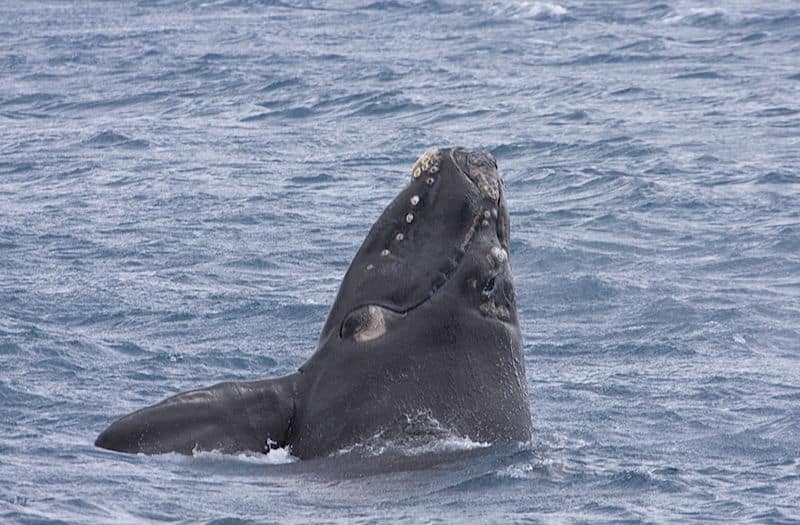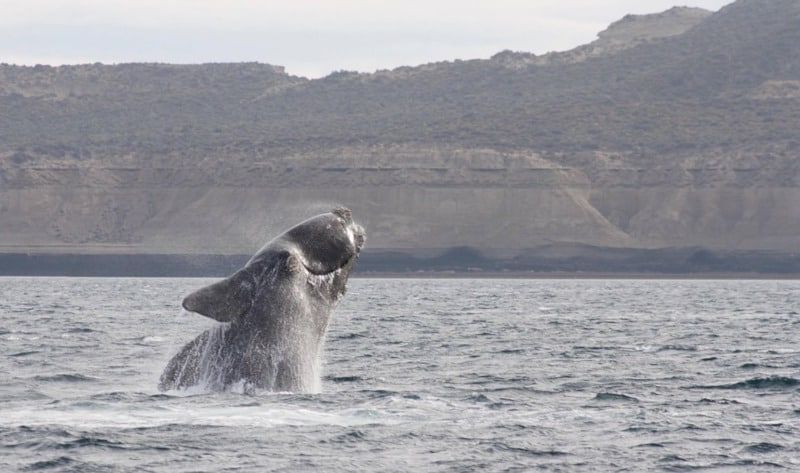Right Whale Facts
- The term of Right Whale does not, in fact, refer to a single variety of cetacean. In point of fact, the name actually refers to a genus of three separate species of closely related baleen whales. All of them also go by the alternate name of the black whale.
- The genus further consists of the North Atlantic Right Whale, the North Pacific Right Whale, and the Southern Right Whale. Their technical names, though, consist of the E. glacialis, the E. japonica, and the E. australis, respectively. All are amazing animals.
- Today, the North Atlantic and North Pacific species hold an unfortunate status. That’s because they remain among the most endangered whales in the world. Both species currently enjoy protection in the United States, under the Endangered Species Act.
- Due to this, legal hunting no longer occurs. Efforts to enforce the ban continue to be mounted. Sadly, this protection may not be enough. Due to their scant numbers, and numerous threats, the IUCN lists both populations as Critically Endangered.
- illegal whaling isn’t the only danger faced by the awesome Right Whale, however. Other perils now pose threats to their existence. Accidental entanglement in commercial fishing nets remains a danger. Another hazard it now faces, though, is climate change.
Fin Whale Blue Whale Beluga Whale


Photographer: Gregory “Slobirdr” Smith
CC License: https://bit.ly/2WZ9duZ
The astounding Right Whale easily impresses anyone who encounters the creature in the open ocean. It does this, however, for several reasons. One of those, quite understandably, is its sheer size. That’s because it’s one of the largest animals to ever roam the earth.
This holds true for all three of the species within the impressive genus. Each of the different varieties achieves approximately the same physical size. They further share the physiological characteristic of sexual dimorphism, much like many of their related species do.
In this instance, also like similar animals, this manifests itself in terms of sheer physical size. More specifically, the females typically achieve a greater length than the males. The total difference, though, isn’t generally enough to be noticed by the casual observer.
Overall, the Right Whale attains an average body length of 36 – 59 ft (11 – 18 m). These further reach an average weight ranging from 120,000 – 160,000 lbs (54,431 – 72,475 kg). The majority of individuals, however, do not exceed 52 ft (16 m) in total length.
All members of this genus display a thick, almost rotund body shape. Each also displays V-shaped blowholes, skin colored from dark gray to black. The most distinctive feature, however, is the presence of rough patches on the head. These appear as white in color.
- Kingdom: Animalia
- Phylum: Chordata
- Class: Mammalia
- Order: Artiodactyla
- Family: Balaenidae
- Genus: Eubalena

Between them, the different types of Right Whale inhabit a total of three specific regions of the globe. One solely inhabits the western Atlantic Ocean. Yet another lives only in the North Atlantic Ocean. The other only appears in portions of the North Pacific.
In each of these various regions, though, these mighty cetaceans have precise climatic requirements for their habitat range. That’s due to the simple fact that none of them can tolerate extremes of temperature. All known groups, therefore, inhabit moderate climates.
The remarkable genus displays even more specific requirements. Distinctively, each of the separate groups evolved differing needs in this regard. In the Northern Hemisphere it tends to avoid open waters and stay close to peninsulas and bays and on continental shelves.
In the Southern Hemisphere, those needs are quite different, as well as variable. There, the great majority of specimens of this animal usually live and feed far offshore in summer. A significant portion of the population occurs in nearshore waters in winter, though.
The magnificent creature possesses a diet similar to most whales. The amazing mammal therefore feeds mainly on copepods, but also consumes krill and pteropods. Individuals frequently forage the surface, underwater or even on the ocean bottom for their food.
Quite sadly, the fabulous Right Whale used to be a preferred target for whalers. This was partly due to its docile nature, the slow surface-skimming feeding behavior, and the tendency to stay close to the coast. But its high blubber content also made it a prime target.
Thresher Shark Blanket Octopus Vaquita
Check out our other articles on Ocean Conservation, Fringed Gentian, Cango Caves, Giant Prickly Stick Insect, Mexican Mole Lizard, Chinese Giant Salamander















Leave a Reply